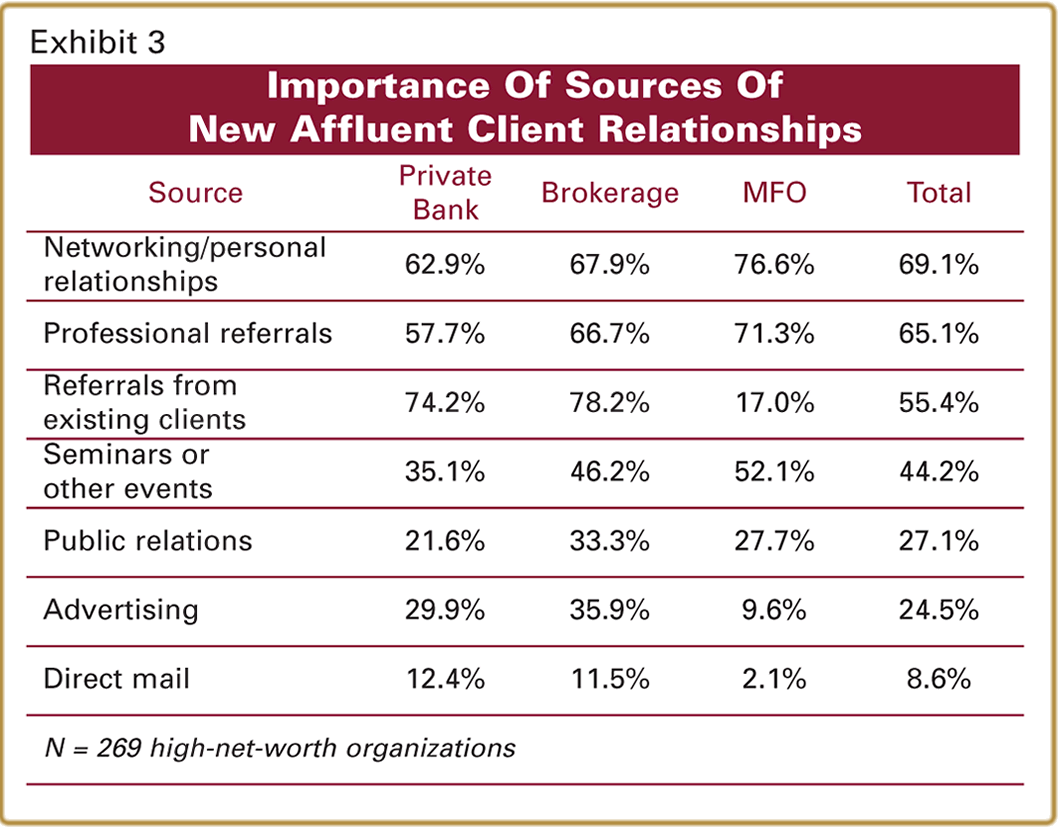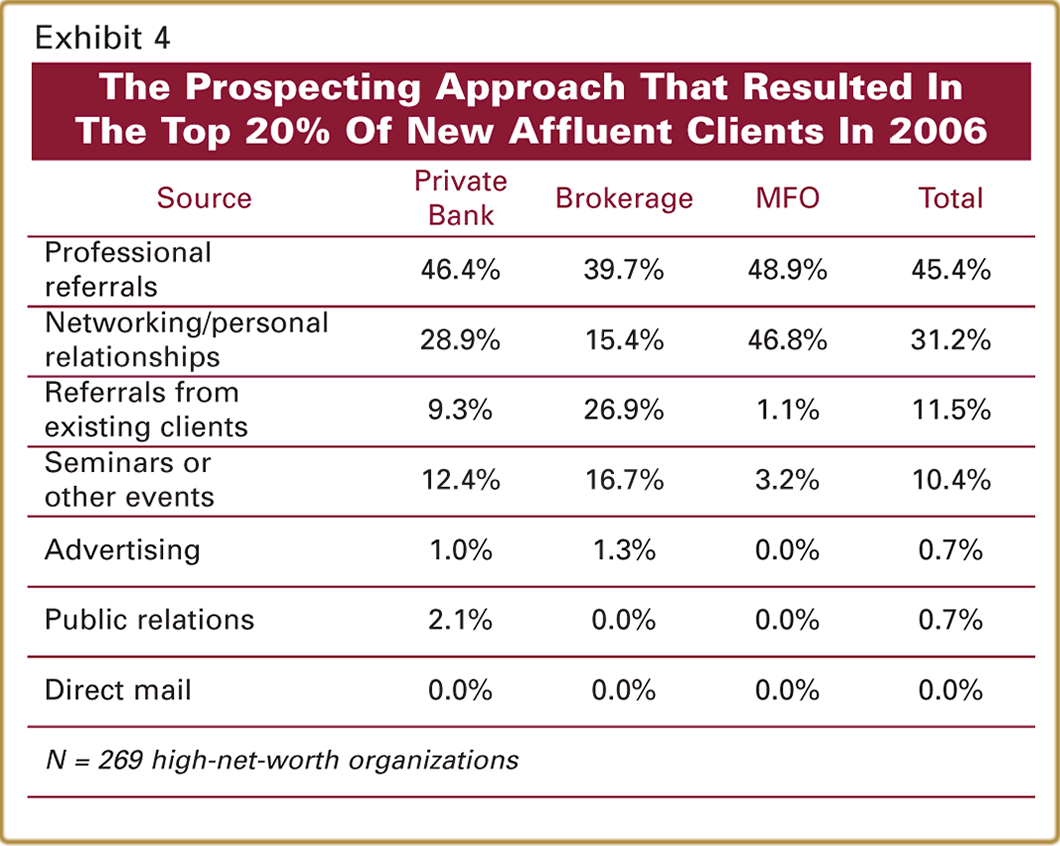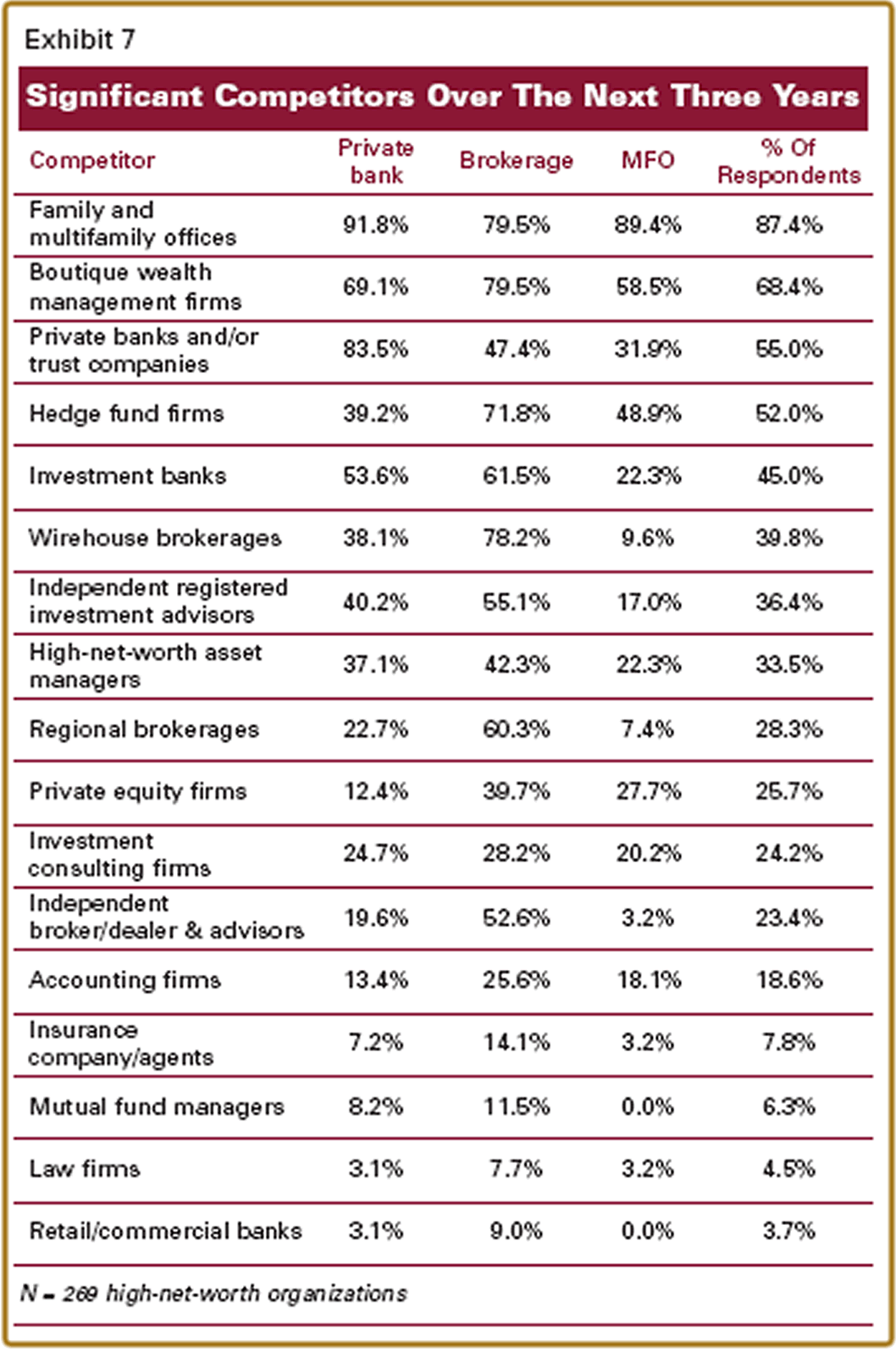A View From the Top - By Russ Alan Prince , Hannah Shaw Grove - 06/1/2007
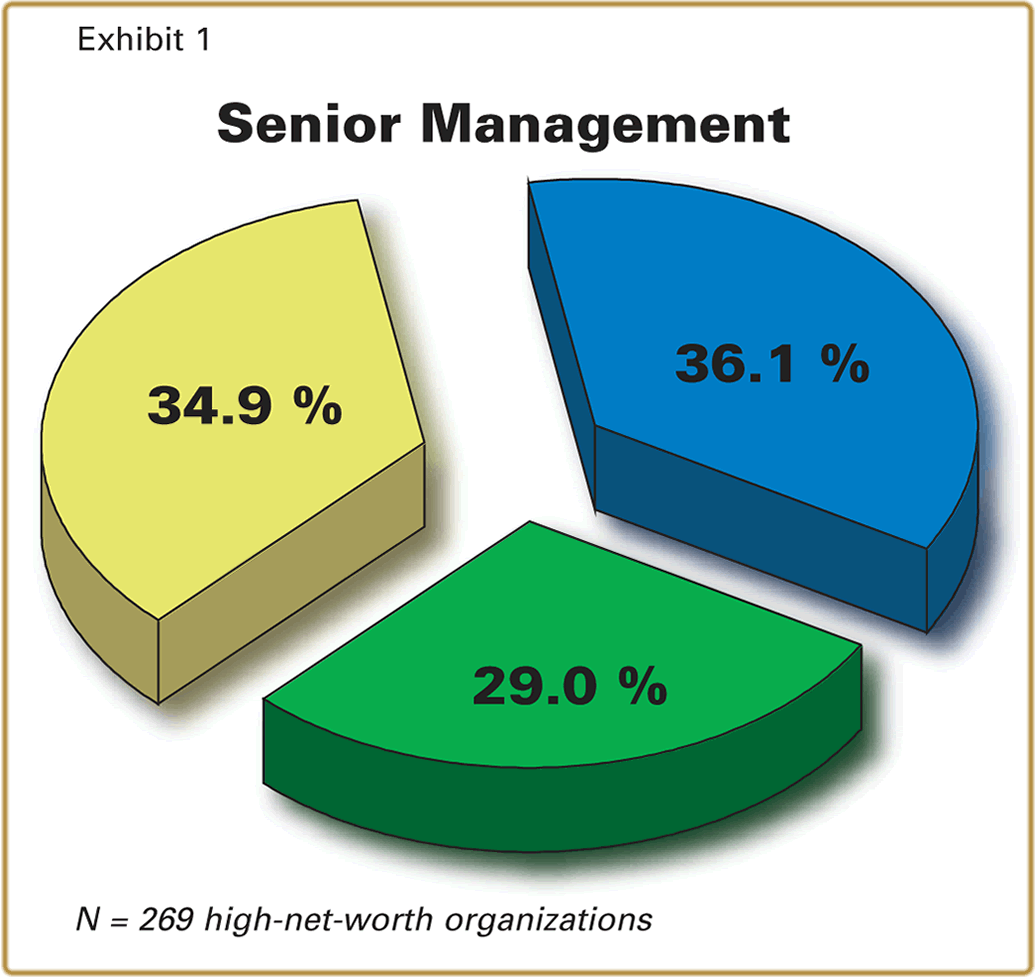 Different
financial firms define the high-net-worth market differently. And, they
prefer clients with certain asset levels over others. In Exhibit 2 we
can see that the multi family offices are defining their "ideal client"
as starting at $5 million of investable assets, with a fifth of them
saying their "ideal client" has a minimum of $25 million in investable
assets. In general, the success of the multi-family office model is to
work with fewer but higher-end affluent clients.
Different
financial firms define the high-net-worth market differently. And, they
prefer clients with certain asset levels over others. In Exhibit 2 we
can see that the multi family offices are defining their "ideal client"
as starting at $5 million of investable assets, with a fifth of them
saying their "ideal client" has a minimum of $25 million in investable
assets. In general, the success of the multi-family office model is to
work with fewer but higher-end affluent clients.
Many of the private banks are less inclined to define their "ideal clients' as being this wealthy. About a third of the private bank directors see their "ideal client" as having between $1 million and $5 million in investable assets. Meanwhile, many of the managing directors at the brokerage firms are looking at even less money to invest when defining their "ideal client."
Whatever the definition of an "ideal client," the final arbiter of success in advising the wealthy is sourcing them. No matter how good a platform is or how talented the investment managers are, without affluent clients there's no business. It's absolutely the case that any form of prospecting can work. However, some approaches to business development are demonstrably more effective then others. Let's now consider the perceptions of senior management.
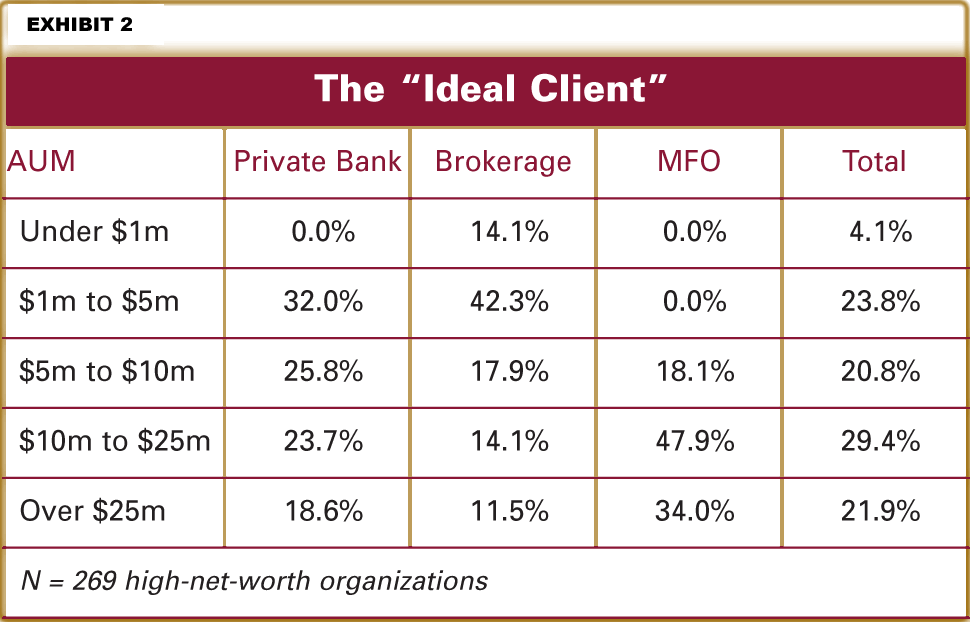 Overall,
the most important source of new affluent client relationships
according to the senior managers surveyed is the networking and
personal relationships of their advisors (Exhibit 3). Overall, the
private bankers, the brokers and the relationship managers at the
multifamily offices are seen by the greatest number of senior managers
as the way to cultivate new wealthy clients. To a large degree, the
personal and professional relationships of the advisors in the field
are recognized as the foundation for business development success.
Overall,
the most important source of new affluent client relationships
according to the senior managers surveyed is the networking and
personal relationships of their advisors (Exhibit 3). Overall, the
private bankers, the brokers and the relationship managers at the
multifamily offices are seen by the greatest number of senior managers
as the way to cultivate new wealthy clients. To a large degree, the
personal and professional relationships of the advisors in the field
are recognized as the foundation for business development success.
For nearly as many of the senior managers, professional referrals such as attorneys and accountants are a very significant way to obtain new affluent clients. As we can see in Exhibit 4, professional referrals was the number one business development strategy, resulting in the top 20% of new affluent clients for most of the firms. We regularly find that it's not a "secret" that the "right"professional relationships can result in a pipeline of new affluent clients. The conundrum is that few advisors or financial firms have implemented asystematic process to build and fill this pipeline.
Senior managers of private banks and brokerage firms perceive referrals from existing clients as the most important means to source new affluent clients. However, this approach is not considered as meaningful by most of the executive directors of the multi-family offices. We can see that, while there is considerable belief in this strategy, it did not result in the "best" new affluent clients last year for most of the firms.
Seminars generally are considered worthwhile, and for some firms they did result in their best new affluent clients. Seminars can prove highly effective provided the topics and environment bring in the "ideal clients." A seminar approach that is proving its merits is nonaligned structured seminars. Here the financial firm teams up with a professional such as an attorney, with both parties bringing affluent clients to the event. What proves to be so successful a draw is a topic not directly tied to either provider. The titles for some very successful non-aligned structured seminars include:
How to buy a jet.
Diamonds, emeralds and rubies.
Next year's fashions: A sneak preview.
Own the road: Test drive a concept car.
Keeping secrets,secret.
Public relations and advertising rarely lead to the wealthy walking in. However, they can be highly useful in building a brand that augments the other approaches to cultivating the wealthy. The key to making these methodologies pay off is continuity. Getting the firm media attention occasionally is not going to do very much. Instead, a concerted public relations strategy is required. For most financial firms this entails devising newsworthy material and packaging it in a way that generates publicity, but also begins a dialog with the intended affluent audience.
Click images to enlarge
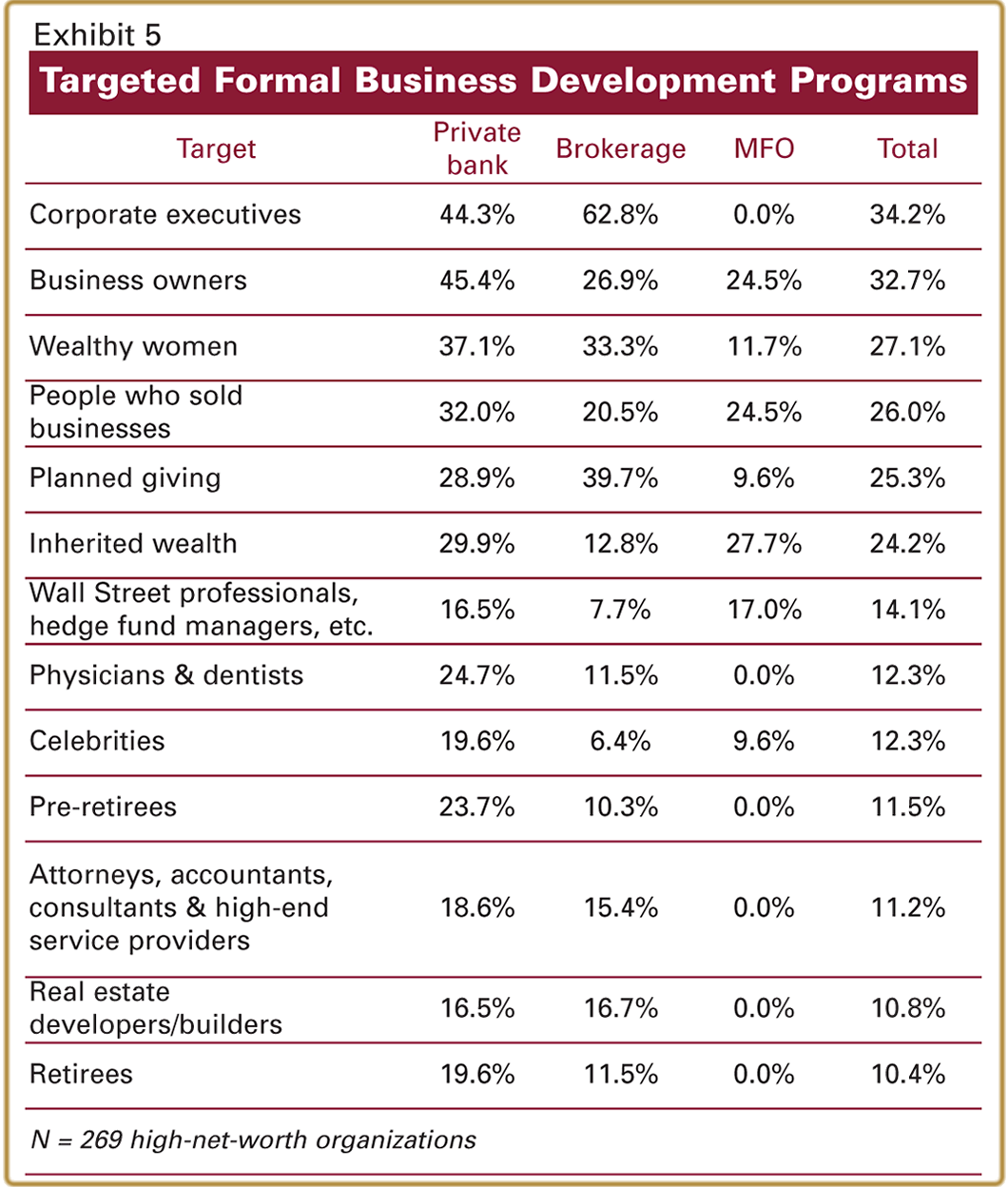 In
order to strengthen their business development efforts, many of the
financial firms have constructed and implemented formal programs
targeted at particular segments of the affluent market (Exhibit 5). For
the brokerage firms and private banks,corporate executives are a prime
wealth market segment. This very much has todo with their strength in
handling the likes of restricted stock.
In
order to strengthen their business development efforts, many of the
financial firms have constructed and implemented formal programs
targeted at particular segments of the affluent market (Exhibit 5). For
the brokerage firms and private banks,corporate executives are a prime
wealth market segment. This very much has todo with their strength in
handling the likes of restricted stock.
Business owners as well as those who sold their businesses are of interest to many of the firms. These two segments account for the greatest creation of new private wealth the world over. Moreover, with the sale of a business, the wealth often converts into investable assets.
While many financial firms have formal business development programs targeting select affluent segments, according to the senior managers surveyed most of these efforts fall short (Exhibit 6). An ethnographic analysis of more than 31 of these programs from all three types of financial firms shows that their limited success is usually a function of not building out these initiatives properly. Some of the key elements to a highly effective formal business development program include:
In-depth knowledge of the affluent target market, concentrating on critical, unique characteristics.
Advisor training and support leveraging the in-depth knowledge.
Actionable processes that enable the advisor to deliver meaningful noncommoditized sof exceptionallyolutions.
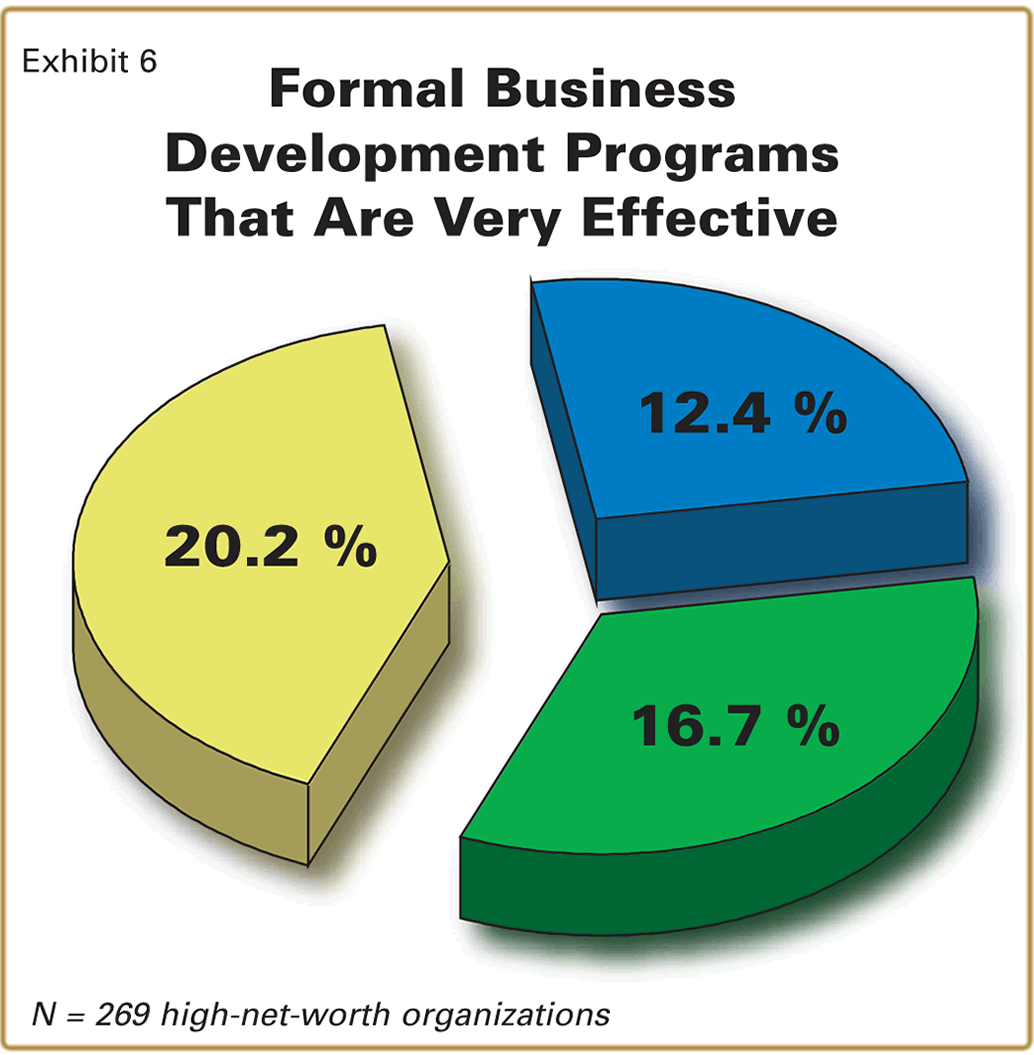 The
number ofexceptionally affluent and the growth rate of this wealthy
cohort, coupled with their considerable profitability for financial
firms, translates into a highly competitive environment. The senior
executives surveyed see that, over the next three years, family and
multifamily offices are going to be the biggest competitors for the
wealthy (Exhibit 7). With the perception that the high-end affluent are
looking for a broad range of expertise backed up with top-of-the-line
products, the family office model is recognized as the optimal delivery
system.
The
number ofexceptionally affluent and the growth rate of this wealthy
cohort, coupled with their considerable profitability for financial
firms, translates into a highly competitive environment. The senior
executives surveyed see that, over the next three years, family and
multifamily offices are going to be the biggest competitors for the
wealthy (Exhibit 7). With the perception that the high-end affluent are
looking for a broad range of expertise backed up with top-of-the-line
products, the family office model is recognized as the optimal delivery
system.
Dropping considerably we find that boutique wealth management firms are seen as the next type of firm likely to be a significant competitor. Rounding out the top three are the private banks and trust companies-most "feared" by the private bankers. Hedge funds are seen as meaningful competitors by about half the senior executives surveyed, followed by the investment banks.
Click Image to Enlarge
As the number of wealthy individuals and families has grown, so has the number of financial organizations and practitioners that are targeting them as potential clients. Advisors and other providers will have to work harder and smarter to earn business from the ultra high-net-worth, given the range of options they have available to them. It will be essential for an advisor to understand the needs and motivations of each affluent prospect, respond to them in a timely and relevant fashion by crafting and delivering holistic solutions that help further their financial priorities, and deliver value in a truly differentiating way.












